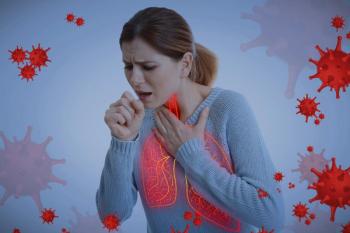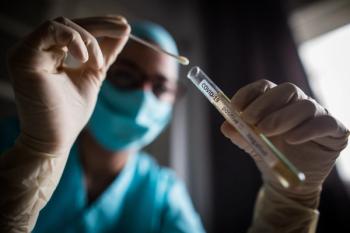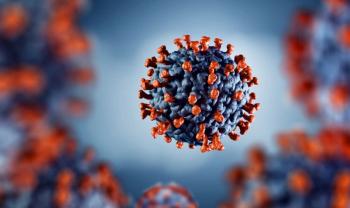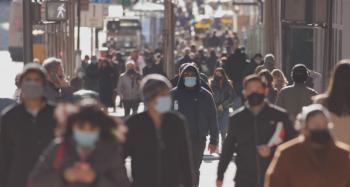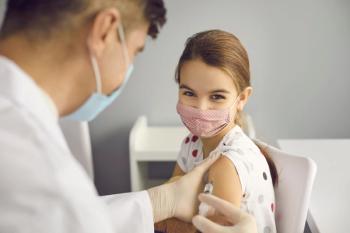
- Drug Topics June 2023
- Volume 167
- Issue 06
COVID-19: After the Emergency Ends
The COVID-19 public health emergency is over. What happens now?
May 2023 was a landmark month for COVID-19. On May 5—1150 days after the initial pandemic declaration1—the World Health Organization (WHO) International Health Regulations (IHR) Emergency Committee lifted the Public Health Emergency of International Concern.2 Six days later, the federal Public Health Emergency (PHE) declaration in the United States ended, marking the end of a tumultuous era that began in late 2019.3
The global risk for COVID-19 remains high, but “there is evidence of reducing risks to human health, driven mainly by high population-level immunity from infection, vaccination, or both,” according to the IHR committee.2 Those reduced risks, coupled with a significant global decline in weekly deaths, hospitalizations, and intensive care unit admissions, suggest that currently circulating variants are not associated with severe disease. Although management of this novel respiratory pathogen—which once required daily government briefings—has become an established and ongoing part of everyday life, “that does not mean COVID-19 is over as a global health threat,” Tedros Adhanom Ghebreyesus, PhD, director-general of the WHO, said.4 As the SARS-CoV-2 virus continues to circulate, new variants may emerge,4 coupled with spikes in cases—and perhaps exacerbated by a vacuum of federal- and state-level disease mitigation guidance.
Across the US, the conclusion of the public health emergency signals a shift in the way pharmacists, health care providers, and federal agencies are looking at COVID-19. Vaccines, treatments, and testing will still be available to the public,3 and pharmacists can administer vaccines through the end of 2024, thanks to an amendment to the Public Readiness and Emergency Preparedness (PREP) Act implemented by the US Department of Health and Human Services (HHS).5 This month, Drug Topics takes a deeper look at the evolution of the pandemic, from the first reported cases to the end of the public health emergency—and beyond.
Taking on COVID-19
Pharmacists were instrumental in ensuring the health of their communities during the pandemic. Between February 2020 and September 2022, pharmacists and other pharmacy team members administered millions of COVID-19 tests and vaccines, “plausibly account[ing] for more than 50% of COVID-19 vaccinations in the United States,” wrote John D. Grabenstein, PhD, RPh, president of Vaccine Dynamics, in a 2022 article published in the Journal of the American Pharmacists Association.6
Pharmacists were given the go-ahead to administer FDA-authorized COVID-19 tests on April 8, 2020. Between May 2020 and May 2022, more than 14,522 Clinical Laboratory Improvement Amendment waivers were granted to pharmacies. In September 2021, pharmacists were authorized to order and administer certain COVID-19 therapeutics.6
The Federal Retail Pharmacy Partnership was launched in November 2020, enabling the “rapid rollout” of COVID- 19 vaccines beginning the following month.6 In early 2021, updated vaccination plans from the White House prominently featured community pharmacists, alongside their chain pharmacy colleagues, as COVID-19 vaccine providers.6 To date, more than 303 million COVID-19 vaccines have been administered through this program (See Figure 1 for more COVID-19 by the numbers).7 Pharmacists were also responsible for administering nearly 88 million influenza vaccine doses during the 2020-2021 and 2021-2022 flu seasons combined.
The federal Test to Treat initiative created an additional opportunity for pharmacists to provide care.6 In March 2022, a network of clinics and pharmacists was assembled to accelerate public access to antiviral medications. As of the end of 2022, these single-stop, test-to-treat sites were active in more than 2000 pharmacy-based clinics and Health Resources and Services Administration–supported federally qualified health centers.6
Amending the PREP Act
On April 14, 2023, HHS Secretary Xavier Becerra announced that pharmacists continue to use the extended authorities granted to them through the PREP Act through the end of 2024.8 “Over the past 3 years, the PREP Act declaration has provided liability protection to manufacturers, distributors, and other organizations conducting countermeasure programs and providers administering COVID-19 countermeasures,” an HHS news release stated.9
The Eleventh Amendment to the PREP Act5 was released on May 11, 2023—the same day the PHE expired. And as promised by Becerra, the updated declaration extended coverage for administration of COVID-19 tests and vaccines, as well as seasonal influenza vaccines, to qualified pharmacists, pharmacy interns, and pharmacy technicians through the end of 2024—regardless of any government agreements or emergency declarations. “Extending the time period for PREP Act coverage…allows for continued access,” the declaration noted. “Licensed pharmacists, pharmacy interns, and qualified pharmacy technicians are well positioned to provide continued access to covered countermeasures, particularly in certain areas or for certain populations that have too few primary care providers, or that are otherwise medically underserved.”5
The amendment does end the ability of pharmacists to vaccinate against COVID-19 across state lines, and it no longer extends coverage to routine childhood vaccinations. An April 2023 news release from HHS outlined other key features that will not change under the amended PREP Act declaration, including continued liability immunity for pharmacists, pharmacy interns, and pharmacy technicians prescribing or dispensing oral antiviral COVID-19 treatments, and continued coverage of the Test to Treat initiative.10
Ending the PHE
On May 9, 2023, HHS released a Fact Sheet with information on the end of the COVID-19 PHE, including updates on the current flexibilities empowered through the emergency declaration.9
Vaccines and Treatments. The CDC’s COVID-19 Vaccination Program Provider Agreement ensured individuals in the US would have continued access to COVID-19 vaccines at no cost. However, “once the federal government is longer purchasing or distributing COVID-19 vaccines and treatments, payment, coverage, and access may change,” the fact sheet stated.9 Government partners continue working to ensure a smooth transition for the provision of COVID-19 vaccines and certain COVID-19 treatments to the traditional health care market.
For most individuals with private insurance, COVID-19 vaccines are considered a preventive health service and will be fully covered without a co-pay when administered by an in-network provider.9 For those without insurance, the HHS Bridge Access Program, which was announced on April 18, 2023, will help maintain broad access to vaccines and treatments. Medicaid will continue coverage of COVID-19 vaccinations without a co-pay or cost sharing through September 2024.9
Out-of-pocket expenses for COVID-19 treatments such as nirmatrelvir-ritonavir (Paxlovid) and molnupiravir (Lagevrio) may change based on individuals’ health coverage. Medicaid programs will continue to cover these treatments through September 2024.9 Emergency use authorizations for COVID-19 products—a list that includes tests, vaccines, and treatments—will not be affected by the end of the PHE, nor will the FDA’s ability to authorize necessary products for emergency use.9
Telehealth Flexibilities. Most Medicare telehealth flexibilities used by individuals with Medicare will not be changed through December 2024.9
COVID-19 Testing. Individuals with Medicare and Medicaid Advantage plans can continue to receive polymerase chain reaction and antigen tests, although Medicaid Advantage cost sharing may change. State Medicaid programs must provide coverage without cost sharing “until the last day of the first calendar quarter that begins 1 year after the last day of the COVID-19 PHE”—in other words, through September 2024, according to the fact sheet.9
Requirements for private insurance companies to cover COVID-19 tests without cost sharing will end. Coverage may continue on a plan-by-plan basis, and private insurers are encouraged to keep providing this free coverage.9 The federal government may also continue to distribute free COVID-19 tests from the Strategic National Stockpile through its partners.
Data Reporting and Surveillance. HHS will no longer have the authority to require COVID-19 laboratory test reporting data, which will affect negative test result reporting and the ability to calculate COVID-19 percent positivity. Hospital data reporting will continue as required by CMS.9 The CDC will continue to report data on COVID-19 hospital admissions, deaths, emergency department visits, test positivity, wastewater and genomic surveillance, number of vaccines administered, and percentage of COVID-19 related deaths.9
Long COVID: Where Do We Go From Here?
With the recent WHO announcement that the COVID-19 pandemic is no longer considered a global health emergency, many individuals may think they no longer need to worry about COVID-19. However, symptoms of a SARS-CoV-2 infection often go far beyond the initial infection.
It is estimated that nearly 1 in 8 individuals have post–COVID-19 conditions (PCC), otherwise known as long COVID—a complex condition involving multiple organ systems. It can present in many ways, including chest pain, difficulties breathing, muscle pain, ageusia or anosmia, alternating feeling hot and cold, and general tiredness.12
A new study has found the risk of long COVID and its associated symptoms across diverse populations.13 Results of the research, which was led by investigators from Weill Cornell Medicine and NewYork-Presbyterian Medical Center, were published in Nature Communications.
“Long COVID is a new disease that is very complicated and quite difficult to characterize,” said Chengxi Zang, an instructor in population health sciences at Weill Cornell Medicine and the study’s lead author. “It affects multiple organs and presents a severe burden to society, making it urgent that we define this disease and determine how well that definition applies among different populations.”14
Investigators developed a high-throughput computational screening pipeline to identify potential PCC symptoms and signs using electronic health records. Data were gathered from the INSIGHT network, which covers 11 million patients in the New York, New York, metropolitan area, and the OneFlorida+ network, which covers 16.8 million patients in Florida, Georgia, and Alabama.13
The study cohort included 35,275 adult patients from New York and 22,341 from Florida with lab-confirmed SARS-CoV-2 infection who survived the first 30 days post infection from March 2020 to November 2021. The cohort included 326,126 noninfected control patients from New York and 177,010 from Florida. Eligible patients were required to have at least 1 diagnosis record within 3 years to 1 week before the index date, and at least 1 diagnosis record within 30 days to 180 days after the index date.13
Investigators found that potential PCC diagnoses identified through the INSIGHT cohort were higher than in the OneFlorida+ cohort. In the INSIGHT cohort, rates of pulmonary fibrosis and thromboembolism were 50% higher. Additionally, 38 diagnoses and 59 medications were identified as potential PCCs in the INSIGHT cohort, compared with 11 diagnoses and 9 medications in the OneFlorida+ cohort.13
They noted that there were various possible reasons for the observed differences, including that patients in the Florida cohort were younger and more socially disadvantaged on average. Socially disadvantaged patients may be less likely to present for care during the relatively short postacute phase, leading to an undercount of potential PCC conditions and medication use, the investigators said. There were also many common conditions across both cohorts, such as dementia, hair loss, pressure ulcers, dyspnea, chest pain, abnormal heartbeat, malaise, and fatigue.13
“In this new research, we examined a broad list of potential long COVID conditions one by one,” said Fei Wang, PhD, an associate professor of health care policy and research at Weill Cornell Medicine and one of the study authors. “These findings can help us better recognize the broad involvement of multiple organ systems in long COVID, and design appropriate plans for patient management and treatment development.”14
Day by Day: A Pandemic Timeline
Rapid changes in policies, procedures, and protocols—as well as in our understanding of the SARS-CoV-2 virus itself—were commonplace during the early days of the COVID-19 pandemic. Even now, governments and agencies continue to amend previous guidance as more scientific information becomes available. To track these major moments and milestones, Drug Topics has created a timeline highlighting some of the most important COVID-19 events.
This timeline was created using information from the David J. Sencer CDC Museum: In Association with the Smithsonian Institution and from Think Global Health, an initiative of the Council on Foreign Relations, in collaboration with the Institute for Health Metrics and Evaluation IHME at the University of Washington.18,19
2019
December 12: Individuals in Wuhan, China, develop symptoms of a pneumonia-like illness that does not respond to standard treatments.
2020
January 5: The CDC’s National Center for Immunization and Respiratory Diseases begins to investigate this novel disease.
January 7: Chinese public health officials identify a novel coronavirus as the cause of the outbreak. The CDC begins to establish a response protocol, following the preparedness plan for Middle East respiratory syndrome coronavirus (MERS-CoV).
January 18: The first laboratory-confirmed case of SARS-CoV-2 is reported in Washington state.
January 19: Four countries—China, Thailand, Japan, and South Korea—report a total of 282 laboratory-confirmed cases.
January 22: The WHO’s International Health Regulation Emergency Committee meets but does not declare 2019-nCoV to be a public health emergency of international concern (PHEIC). The committee decides to monitor the situation and reconvene in 10 days.
January 23: The first global COVID-19 lockdown is implemented in Wuhan; 11 million individuals are placed under lockdown.
January 24-January 30: Travel-related cases of SARS-CoV-2 are confirmed in Illinois, followed shortly by spread between 2 other individuals with no history of travel. This marks the first recorded cases of person-to-person spread in the US.
February 3-February 5: The CDC submits an emergency use authorization (EUA) to expedite approval for an agency-developed SARS-CoV-2 diagnostic test. Days later, the CDC begins shipping the CDC 2019-nCoV Real Time RT-PCR to domestic and international laboratories.
February 10: Worldwide deaths from SARS-CoV-2 reach 1013, surpassing the 2002-2003 SARS outbreak.
February 11: The WHO announces the official name for the disease causing the 2019 novel coronavirus outbreak: COVID-19.
February 29: The first death of an individual with laboratory-confirmed COVID-19 is confirmed: a man in his 50s from Washington state who had been hospitalized with pneumonia of an unknown cause.
March 11: After more than 118,000 cases and 4291 deaths across 114 countries, the WHO declares COVID-19 a pandemic.
March 13: The Trump administration declares COVID-19 a public health emergency (PHE).
March 15: States begin implementing shutdowns to prevent the spread of COVID-19. New York City Public Schools, the largest school system in the US, shuts down.
March 17: Moderna begins the first human trials of a COVID-19 vaccine at a research facility in Seattle, Washington.
April 3: The CDC announces new mask wearing guidelines, recommending that all individuals wear a mask outside of the home.
April 4: Approximately 1 million cases of COVID-19 are confirmed worldwide, representing a more than 10-fold increase in less than a month.
April 10: The US becomes a global COVID-19 hot spot, with more than 500,000 confirmed cases and 18,600 confirmed deaths. New York has more reported cases of COVID-19 than Spain, Italy, or China.
April 30: Operation Warp Speed, a partnership between the US Department of Health and Human Services and the Department of Defense, is launched, funding clinical trials for 6 promising vaccine candidates.
May 1: An EUA is issued for antiviral drug remdesivir to treat suspected or confirmed COVID-19 in individuals hospitalized with severe diseases.
June 22: Results of a study published in Science Translational Medicine suggest that as many as 80% of individuals in the US who sought out care for flulike symptoms in March 2020 were likely infected with undetected COVID-19.
July 6: More than 200 scientists sign an open letter requesting that the WHO update its COVID-19 guidelines to include warnings about airborne transmission of the virus.
July 22: Antibody data show that between March and May 2020, there were approximately 10 times more SARS-CoV-2 infections than initially reported, ranging from 6 to 24 times more cases, depending on the region.
August 14: Reports from a CDC panel survey on mental health conducted among adults in the US showed that 41% of respondents were experiencing mental health issues and 11% had recently considered suicide.
August 17: COVID-19 becomes the third-leading cause of death in the United States, with more than 5.4 million total cases and more than 1000 deaths per day.
August 28: The Nevada State Public Health Laboratory confirms the first documented case of COVID-19 reinfection in the United States.
September 1: The US declines to join COVAX, a global program led by the WHO to distribute and develop COVID-19 vaccines worldwide.
September 28: The worldwide COVID-19 death toll reaches 1 million.
Mid-November: The Moderna and Pfizer-BioNTech COVID-19 vaccines are found to be 95.4% and 95% effective, respectively, in clinical trials.
December 3: The CDC’s Advisory Committee on Immunization Practices (ACIP) recommends that health care professionals and older individuals living in long-term care facilities be the first to be offered a vaccine.
Mid-December: EUAs are issued for the Pfizer-BioNTech and Moderna COVID-19 vaccines. ACIP recommends the vaccine for all individuals 16 and 18 years and older, respectively.
December 29: The Colorado Department of Health reports the first case of the COVID-19 B.1.1.7/Alpha variant detected in the United States.
December 31: On the 1-year anniversary of the first reported case of COVID-19 to the WHO, only 2.8 million individuals in the US have received a COVID-19 vaccine.
2021
January 22: Morbidity and Mortality Weekly Report data on the Alpha variant prompts the CDC to recommend “universal and increased compliance” with mitigation strategies.
Late January: The first case of the COVID-19 P.1/Gamma variant is detected in Minnesota, and the first case of the COVID-19 B 1.351/Beta variant is detected in South Carolina.
Late February: An EUA for Johnson & Johnson’s single-dose COVID-19 vaccine is issued. ACIP recommends the vaccine for all individuals 18 years and older.
Mid-April: The CDC and FDA issue a joint statement recommending the pause of use of the Johnson & Johnson COVID-19 vaccine while cases of rare and serious blood clots are being investigated. Later, ACIP and the FDA will recommend the continued use of this vaccine in adults.
June 1: The Delta variant—B.1.616.2—becomes the dominant SARS-CoV-2 variant in the US and kicks off a third wave of infections.
Late August: The Pfizer-BioNTech COVID-19 vaccine is fully approved by the FDA for individuals 18 years and older. ACIP recommends the vaccine for all individuals 16 years and older.
October 6: A clinical case definition of post–COVID-19 conditions—also known as long COVID—is published by the WHO.
November 26: The SARS-CoV-2 Omicron variant is designated a variant of concern by the WHO. Days later, the first case of Omicron is confirmed in San Francisco, California.
December 9: Booster vaccine recommendations are expanded to include all individuals 16 years and older.
December 16: ACIP recommendations are updated, indicating a clinical preference for the mRNA COVID-19 vaccines.
2022
January 3: Nearly 1 million new COVID-19 infections are reported in the US as the number of hospitalized patients rises nearly 50% in 1 week.
January 31: The Moderna COVID-19 vaccine is fully approved by the FDA for individuals 18 years and older.
March 5: A total of 10,704,043,684 COVID-19 vaccine doses have been administered worldwide to approximately 56% of the world population.
May 24: Results of a CDC study indicate that up to 1 in 5 adults infected with COVID-19 will develop symptoms of long COVID.
June 7: FDA advisers recommend the Novavax COVID-19 vaccine, an alternative to the approved mRNA vaccines that uses traditional vaccine technology.
September 18: President Joseph R. Biden declares the pandemic to be over during a televised interview on 60 Minutes. The following day, White House officials state that federal COVID-19 polices are unchanged.
December 8: The FDA authorizes Moderna and Pfizer-BioNTech COVID-19 vaccines targeting the Omicron variant for use in individuals as young as 6 months. The next day, the CDC expands the use of the bivalent booster for children aged 6 months to 5 years.
2023
January 30: The Biden administration informs Congress that the PHE will not be renewed when it expires on May 11.
Mid-March: As cases decline, attention turns toward determining the origins of the SARS-CoV-2 virus. Biden signs a law to declassify national intelligence on the origins of the virus, and Chinese researchers release genomic data that may help identify the origins.
April 19: The CDC updates COVID-19 vaccine recommendations to allow for an additional bivalent dose for older adults and immunocompromised individuals.
May 5: The WHO ends the COVID-19 PHEIC, 3 years and 2 months after implementation.
May 11: The COVID-19 PHE expires, 1154 days after being initiated
References
WHO director-general’s opening remarks at the media briefing on COVID-19. News release. World Health Organization. March 11, 2020. Accessed May 18, 2023. https://www.who.int/director-general/speeches/detail/who-director-general-s-opening-remarks-at-the-media-briefing-on-covid-19---11-march-2020
Statement on the fifteenth meeting of the IHR (2005) Emergency Committee on the COVID-19 pandemic. News release. World Health Organization. May 5, 2023. Accessed May 18, 2023. https://www.who.int/news/item/05-05-2023-statement-on-the-fifteenth-meeting-of-the-international-health-regulations-(2005)-emergency-committee-regarding-the-coronavirus-disease-(covid-19)-pandemic
End of the federal COVID-19 public health emergency (PHE) declaration. News release. CDC. May 5, 2023. Accessed May 18, 2023. fhttps://www.cdc.gov/coronavirus/2019-ncov/your-health/end-of-phe.html
Cheng M, Keaten J. WHO downgrades COVID pandemic, says it’s no longer emergency. Associated Press. May 5, 2023. Accessed May 18, 2023. https://apnews.com/article/who-declares-covid-emergency-over-pandemic-8b6445735df5218b5d9d6ec32fa047ca
Eleventh Amendment to Declaration Under the Public Readiness and Emergency Preparedness Act Countermeasures Against COVID-19. Federal Register. May 12, 2023. Accessed May 18, 2023.
https://www.federalregister.gov/documents/2023/05/12/2023-10216/eleventh-amendment-to-declaration-under-the-public-readiness-and-emergency-preparedness-act-for Grabenstein JD. Essential services: quantifying the contributions of America’s pharmacists in COVID-19 clinical interventions. J Am Pharm Assoc. 2022(6);1929-1945.e1. doi:10.1016/j.japh.2022.08.010
Federal retail pharmacy program. CDC. Updated May 11, 2023. Accessed May 18, 2023.
https://www.cdc.gov/vaccines/covid-19/retail-pharmacy-program/index.html Biscaldi L. Breaking: HHS extends PREP Act authority for pharmacists, pharmacy technicians. Drug Topics. April 14, 2023. Accessed May 18, 2023.
https://www.drugtopics.com/view/breaking-hhs-extends-prep-act-authority-for-pharmacists-pharmacy-technicians Fact sheet: end of the COVID-19 public health emergency. News release. US Department of Health and Human Services. May 9, 2023. Accessed May 18, 2023.
https://www.hhs.gov/about/news/2023/05/09/fact-sheet-end-of-the-covid-19-public-health-emergency.html Fact sheet: HHS announces intent to amend the declaration under the PREP Act for medical countermeasures against COVID-19. News release. US Department of Health and Human Services. April 14, 2023. Accessed May 18, 2023.
https://www.hhs.gov/about/news/2023/04/14/factsheet-hhs-announces-amend-declaration-prep-act-medical-countermeasures-against-covid19.html Coronavirus (COVID-19) update: FDA authorizes changes to simplify use of bivalent mRNA COVID-19 vaccines. News release. FDA. April 18, 2023. Accessed April 18, 2023.
https://www.fda.gov/news-events/press-announcements/coronavirus-covid-19-update-fda-authorizes-changes-simplify-use-bivalent-mrna-covid-19-vaccines Ballering AV, van Zon SKR, Olde Hartman TCO, Roslamen JGM; Lifelines Corona Research Initiative. Persistence of somatic symptoms after COVID-19 in the Netherlands: an observational cohort study. Lancet. 2022;400(10350):452-461. doi:10.1016/s0140-6736(22)01214-4
Zhang C, Zhang Y, Xu J, et al. Data-driven analysis to understand long COVID using electronic health records from the recover initiative. Nat Commun. 2023;14(1). doi:10.1038/s41467-023-37653-z
Study discovers long COVID risk and symptoms vary in different populations. News release. Weill Cornell Medicine. May 9, 2023. Accessed May 19, 2023. https://news.weill.cornell.edu/news/2023/05/study-discovers-long-covid-risk-and-symptoms-vary-in-different-populations
WHO coronavirus (COVID-19) dashboard. World Health Organization. Updated May 10, 2023. Accessed May 17, 2023.
https://covid19.who.int/ COVID data tracker. COVID-19 vaccinations in the United States. CDC. Updated May 11, 2023. Accessed May 17, 2023.
https://covid.cdc.gov/covid-data-tracker/#vaccinations_vacc-people-booster-percent-pop5 The Federal Retail Pharmacy Program for COVID-19 vaccination. CDC. Reviewed May 11, 2023. Accessed May 17, 2023.
https://www.cdc.gov/vaccines/covid-19/retail-pharmacy-program/index.html CDC Museum COVID-19 timeline. CDC. Updated March 15, 2023. Accessed May 18, 2023.
https://www.cdc.gov/museum/timeline/covid19.html#Early-2022 Kantis C, Kiernan S, Bardi JS, Posner L, Turilli I. Updated: timeline of the coronavirus. Think Global Health. Updated May 12, 2023. Accessed May 18, 2023.
https://www.thinkglobalhealth.org/article/updated-timeline-coronavirus
Articles in this issue
over 2 years ago
Do’s And Don’ts: Social Media Tips for Pharmacistsover 2 years ago
What You Need to Know About the Albuterol Shortageover 2 years ago
Pharmacists Play Key Role in Managing Diabetic Eye Diseaseover 2 years ago
Number One No Longerover 2 years ago
Staying Safe This Summerover 2 years ago
Breaking: FDA Approves First-Ever RSV VaccineNewsletter
Pharmacy practice is always changing. Stay ahead of the curve with the Drug Topics newsletter and get the latest drug information, industry trends, and patient care tips.

